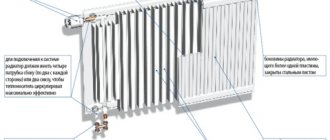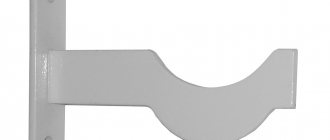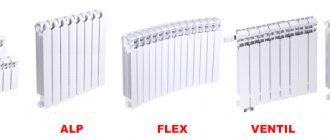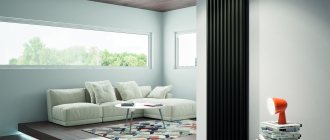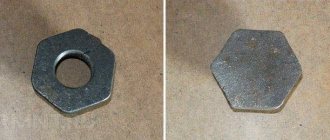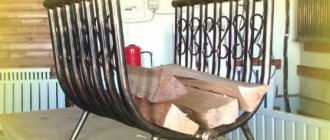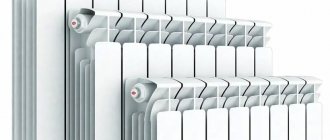Manufacturers of flat panel heating batteries
The domestic market mainly presents foreign products - products from Kermi, Zehnder and Buderus.
Kermi
Flat models are offered here in two variations - with a smooth (Plan series) or grooved (Profil series) front surface, painted in two layers using a cataphoretic method. The side and top grilles can be removed to clean the products from dust. German models are available in the following varieties:
- valve modifications ThermX2. Depending on the power, different types of control valves are introduced;
- ThermX2 Kompakt small flat batteries are universal, they are mainly used in low temperature conditions;
- The Kompakt Hygiene hygiene line has a double varnish coating; it is common in hospitals, as its protective layer and simple design allow the use of disinfectant solutions.
The products are sold in the high price segment and exhibit effective heat transfer.
Zehnder
The manufacturer from Germany, in addition to classic variations, offers lines with non-standard sizes, shapes, and raw materials. Models with printed mirrors, wood and stone front panels, and paintings are common. Vertical and horizontal devices with angular and radius designs are offered.
The Plano series has a discreet design; convective lamellas are built into the batteries. Nova Mirror - ultra-fashionable flat products with shallow depth and a built-in mirror, optimal for narrow spaces.
Buderus
One of the concern's specializations is the production of flat steel radiators with bottom (Logatrend VK-Profil series) and side connections (Logatrend K-Profil). The models attract with high efficiency and unsurpassed quality of welds. The package includes valves designed for 1- and 2-pipe systems. Manufacturer's warranty – from 5 years.
If we compare the price ranges of the products of the three companies, Buderus flat radiators are the most affordable, while the upper limit is observed in the Plano series of the Zehnder brand.
The huge variety of heating devices that are present on the modern heating equipment market often confuses consumers. After all, the question of which is better is tormented precisely when the eyes run wide. This article will discuss heating radiators - “flat”. Why is this topic so interesting nowadays? Judge for yourself.
- Firstly, the flat design of the heating device increases the free space in the room. Accordingly, it becomes possible to install a window sill of smaller width.
- Secondly, it reduces the dust collection plane.
- Thirdly, it is an unusual and attractive appearance.
But here the question arises: what about heat transfer? It is no secret that this indicator largely depends on the size of the heating battery. That’s right, the heat transfer rate decreases, but it’s not for nothing that manufacturers produce these devices, which means there is some kind of trick that maintains the radiator power at the required size. We will deal with all these questions here.
Overview of flat products
Production Features
If we talk about flat models, then most often we mean not the surface topography, but the depth of the radiator. At the same time, the term “flat” can be interpreted in different ways, because this category very often includes all batteries whose depth is less than that of a standard cast iron product.
Aluminum products with shallow depth
Almost all devices that belong to this type are steel panel heaters. No, in principle, you can find a flat oil cooler and an aluminum structure, but the main niche in this market segment is occupied by steel.
The following radiators are produced using mixed technology:
- The basis of the product is a stamped steel sheet, which is machined and forms the internal contour of the heating device.
- Due to stamping, a profile is formed that provides an increase in the heat transfer area.
- To improve operating efficiency, trapezoidal convection fins are sometimes welded to the main sheet. When passing through the fins, the air is heated and then distributed throughout the room. (See also the article Repair of heating pipes: features.)
Appearance of a flat panel model
As a result of all these operations, a flat steel radiator is obtained, which combines compact dimensions with fairly good heat dissipation. Of course, in this parameter it will be inferior to full-size models, but if the shape is important to us, then we will have to put up with some heat losses.
Types of panel radiators
Most manufacturers of panel radiators use the same product classification. Having understood it, you will be able to determine at first glance the depth of the model and its design - even if in front of you is not the battery itself, but only instructions with markings.
Note! As a rule, the first number indicates the number of panels, the second – the number of rows of convection fins.
Design features of different types
We will describe how the symbols are deciphered in the table below:
| Radiator type | Design |
| 10 | Products of the tenth type are single-row stamped panels of small thickness. As follows from the markings, there are no convection fins, which leads to a significant reduction in heat transfer. Approximate depth: 45 to 49 mm. |
| 11 | In this case, one row of fins is added to the stamped panel on the back side, which is responsible for convection. At the same time, the efficiency of heating the room with such a battery increases significantly. In this case, the depth increases insignificantly - up to 60-62 mm. |
| 20 | The design includes two panels, between which there is a gap for heat exchange. By increasing the number of panels, the depth becomes 64 - 65 mm. |
| 21 | The dimensions of radiators of this type are similar to the previous ones, but they provide much more efficient heating. This is achieved by placing one row of heat transfer fins between the panels. |
| 22 | Stamped plates are installed outside of such batteries, and two rows of fins for convection are installed inside. For increased efficiency you have to pay by increasing the dimensions to 110 mm. |
| 33 | Type 33 is represented by the most powerful, but at the same time the deepest radiators. Designs of 155 -170 mm include three panels and three rows of fins responsible for heat exchange. |
Note! All models, except type 10, have an upper grille and protective side walls. At the same time, the size of the product increases, if at all, but not by much.
Flat single row heating radiator(11 type, one panel, one row of fins)
As you can see, the dimensions of radiators used to heat a room can be different. Only products of types 10 and 11 are usually classified as flat, however, 20 and 21 also look very compact.
Criterias of choice
Flat steel heating radiators are not installed in systems with natural coolant circulation, since a large amount of working fluid is needed here. Such batteries perform well in forced circulation circuits, but here it is necessary to correctly calculate the volume of the expansion tank and the performance of the circulation pump.
When choosing a model, it is necessary to take into account the height and thermal power. Low radiators are relevant for the characteristic height of the window sill (when it is not possible to install higher equipment). The lower the heating device, the more evenly the heat is distributed, creating a dense curtain.
Single-pipe wiring allows you to reduce installation costs, but here it is necessary to equip a bypass line. The shut-off valve will become a barrier to the coolant; it is necessary to ensure rational output of the device. With a single-pipe scheme, the most advantageous is a diagonal connection, when the coolant is supplied from the top left, and the outlet is organized from the bottom right.
The width of the radiator is selected so that it covers 50-75% of the same parameter of the window opening. Narrow models are not able to create a dense thermal curtain.
Operating requirements
Thin steel heating radiator type 11 in the interior of the house.
Steel appliances should be used in enclosed areas where there is no harmful corrosive effect and moisture will not form on their surface. For example, you should not install steel equipment in bathrooms, laundries, baths, halls, swimming pools, car washes, and refrigerators. For the same reason, they cannot be installed in houses in the first year after completion of construction or during modernization, if the premises will not be heated.
Flat radiators can be used in both single-pipe and two-pipe heating systems, using pipes made of various materials: steel, copper or plastic, in which water or a special glycol mixture can be used as a coolant. Polypropylene pipes must be reinforced with a solid layer of aluminum to avoid oxygen diffusion (the penetration of air into the heating system from the outside, which can cause corrosion processes), and metal fittings and fittings must be used with them.
Flat radiators can be installed for systems with membrane expansion tanks. Here it is necessary to use tanks whose membrane is made of “Butyl” material, which protects the heating system from air penetration.
Also, the assembly of thin radiators is permitted in small open systems with forced circulation with limited thermal output, but provided that approved corrosion inhibitors are used. Please note that flat heaters are not used in systems with natural circulation of coolant, because it is impossible to ensure their sufficient heat transfer.
It is prohibited to install radiators in systems where the maximum operating pressure may exceed 9-10 bar and the operating temperature above 110-120°C. When checking the tightness of the system, the pressure should not exceed 12-13 bar. These values are typical for devices from the most famous manufacturers; More detailed information can be found in the equipment documentation.
Installations with steel radiators must be filled and topped up with water of the appropriate quality. Requirements for water characteristics vary from manufacturer to manufacturer, but the averages are as follows:
- the total content of chloride ions and sulfate ions is not higher than 150 mg/l (for copper pipes - not higher than 50 mg/l),
- oxygen content not higher than 0.1 mg/l,
- Water pH within 7.0 ÷ 10.0,
- water hardness is not higher than 4.0.
It is unacceptable to empty the heating system of water, except during failures. If an emergency arises, for example, during repairs, water should be removed only from the part where the work will be carried out. Once completed, the system must be immediately filled with water.
Annual water losses in the heating system should not exceed 5% for a closed system and 10% for an open one.
Flat-plate radiators should be cared for using cleaning agents that do not contain solvents, acids or other substances that cause damage to the paintwork and, as a result, corrosion.
Installation
A flat radiator is used for heating systems that have forced circulation of a coolant, that is, where circulation pumps are used.
The heating system using a flat battery is a closed structure and includes a membrane expansion tank. It looks something like this: the coolant, under the influence of the pump, flows through a direct pipeline, passes through the valve and then reaches the heat consumer, then passing through the air vent, it goes through the return pipeline to the membrane expansion tank. And from there the process repeats again.
Scheme of a closed heating system with flat radiators
If the coin cell battery installation uses an open system, the battery life will be significantly shorter. There is often no need to drain the water. Newly poured liquid always contains a high oxygen content, which will lead to corrosion on the radiator. It is not recommended to install thin devices in rooms with high air humidity, for example, in the bathroom. If all requirements and recommendations are followed, the risk of corrosion is minimal.
It is possible to install flat radiators with your own hands one after another, in this case the heat output will decrease by forty percent per meter, since the heat transfer through radiation after the second row will decrease. If they are installed in rows and equipped with plates on top, the result is a structure that looks like one device.
A flat battery is a closed, flat-type device through which a coolant moves.
When the battery device is used for a water heating system with plastic or metal pipes, an anti-diffusion barrier must be installed. It will protect against exposure to oxygen masses.
Before purchasing flat batteries, check the specifications of the flat battery device to see if they are suitable for your building. For example, when a building uses a gas boiler with a safety valve, the liquid pressure should be a maximum of 3.0 bar.
Pay attention to the temperature of the water in the pipes. The one who decides to change the radiators, throw out the outdated ones and install new ones argues incorrectly.
Before purchasing new radiators for heating, you need to make accurate calculations, take into account the characteristics of the building, the design of the installed or existing system, the technical characteristics of the device, and entrust the installation work to specialists
The one who decides to change the radiators, throw out the outdated ones and install new ones argues incorrectly. Before purchasing new radiators for heating, you need to make accurate calculations, take into account the characteristics of the building, the design of the installed or existing system, the technical characteristics of the device, and entrust the installation work to specialists.
Advantages and disadvantages
Flat radiators have the following advantages:
- modern design, attractive performance. The equipment can complement most interior designs; if you want to disguise the device, you can use a special decorative screen;
- the devices do not require specific care; it is enough to wipe them with a damp cloth from time to time;
- radiators are supplied in such a configuration that there is no need for additional expenses;
- technical characteristics help save coolant;
- the compact device can be hidden in a niche or opening;
- possibility of DIY installation;
- The batteries heat the room efficiently.
Flaws:
- the need for strict compliance with the operating conditions recommended by the manufacturer, the vulnerability of steel models to corrosion;
- instability to water hammer. To ensure safe use, you need to install a pressure reducer or its equivalent into the system.
Another significant disadvantage is the relative fragility of the equipment, so it is important to organize careful transportation of products
How to make a flat screen for a battery out of wood, work sequence
So, in order to make a battery screen with your own hands from wood, you will need to purchase:
- Bar with a cross section of 20x20mm. Its quantity should correspond to the perimeter of the niche.
- Rail. You can choose its sizes at your discretion. From experience I will say that the best option would be a thin strip 20mm wide.
- 50mm wide rail for screen cashing.
- Self-tapping screws for connecting bars.
- Small nails for fastening the slats.
The tools you will need are a hacksaw, hammer, screwdriver, tape measure, drill or screwdriver.
How to make a screen for a battery with your own hands photo
Let's start manufacturing. We measure the length of the niche and cut off two bars accordingly. We do the same with the height of the niche, only we additionally reduce the length of the cut bars by two of its thickness. In principle, it is better to reduce both the length and height of the finished frame by at least 5mm. This is necessary so that small deviations in the geometry of the niche do not cause problems during installation. We connect the resulting four bars together into a rectangular frame using self-tapping screws. To prevent the beam from cracking when screwing in the screws, you need to drill a hole for them in advance - the diameter of the drill should be one third or half less than the diameter of the self-tapping screws used.
At the next stage, we cover the resulting frame with slats. Here you need to check one point - the diagonal of the future screen. If it turns out skewed, then inserting it into a niche will be problematic, and its appearance will be, to put it mildly, useless. Once the frame is trimmed and painted or varnished, you can begin installing the screen.
Screen for battery photo
Installing such a screen on a battery is very simple. On the side slopes of the niche, from its outer corner, a size equal to the thickness of the screen is deposited. You need two marks at the top and bottom of the slope. In these places, a wooden block is installed using a hammer drill and dowels, to which the screen is screwed with self-tapping screws. If the need arises to get to the battery, it will be enough to unscrew four screws.
This is how flat screens for radiators are made. All that remains is to install the decorative trim and hide the places where the screen is attached and its contact with the slopes. Before installation, the trim will need to be trimmed and painted. They are fastened with nails, the head of which is first removed.
Author of the article Alexander Kulikov
Classification
When classifying heating batteries, numbers are used, the first of which indicates the number of lamellar sheets, the second - the number of ribs:
- The figure shows that there is only one plate and a complete absence of ribs.
- One lamellar sheet complemented by a rib design.
- Two lamellar sheets, one equipped with convection fins.
- Three lamellar leaves, all connected to ribs.
Classification of flat radiators
An additional part of flat batteries is the upper grille, which has side housings on both sides. As a rule, it is snow-white. The battery packaging kit is supplemented with fastening parts. Wall partitions made from different materials require different means of fastening. If the packaging kit is not supplemented with the fastening elements that are needed in a particular case, you will have to purchase others yourself.
Flat radiators are equipped with four connection pipes. This makes it possible to connect the device to the entire heating system from any side. As a rule, they are connected directly to the heating riser or specially designed fittings are used.
There are flat steel radiators equipped with a thermostatic valve. It regulates the fluid inside the product. It is connected on the right side; to connect on the left, you need to make a special order.
Some factories that manufacture flat batteries and heating radiators create horizontal models that connect to the wall surface in the middle. The presence of a valve insert is not necessary. To make a connection from below, hiding the heating pipes in the floor, the packaging set must be integrated. There are connecting parts that are hidden in the walls.
When choosing a method for connecting radiators, take into account the price cost of the product, the design of the room, building, type or type of heating in general. Standard heating systems require side connections; if pipes run under the floor, use bottom connections.
Design and principle of operation
Flat heating radiators are constructed of two plates, which are created by stamping. These plates are welded together, but among them there is a space where the coolant circulation process takes place. The structure has special pipes through which the batteries are connected to the heating system. Almost all devices that belong to this type are steel panel heaters.
Each plate can be equipped with convection fins, which have a positive effect on increasing heat transfer rates.
A radiator with fins has 50-60% more power. However, it is worth noting that it will emit more dust, so it is best to install such devices in rooms that meet high sanitary standards.
To classify plate radiators, special digital designations are used: the first number is the number of plates, the second is the number of plates with convection fins:
- 10 - 1 plate without convection fins;
- 11 - 1 plate with convection fins;
- 21 - 2 plates, one of them is equipped with convection fins;
- 33 - 3 plates, each of them has convection fins.
Steel flat radiator with fins
Thin heating radiators are also equipped with side casings with grilles on top. The color of such devices is most often white.
The standard set of flat heating radiators includes a set of fastening elements for brick walls. If the walls in your room are made of a different material, then you need to acquire fasteners that are suitable for mounting narrow batteries.
As a rule, narrow radiators are connected either directly to the heating system riser or using special fittings.
You can also find batteries on sale that have a thermostatic valve included in the connection kit. Thanks to this element, you can adjust the water speed in the radiator.
Features of operation
When using technology, you must adhere to the following restrictions:
- the coolant temperature should not exceed 110-120°C;
- the recommended operating pressure, depending on the model, varies between 4.5-10 MPa;
- the small volume of working fluid used implies forced circulation;
- the maximum permissible acidity of water is 8.5 pH;
- It is not recommended to install steel products in damp areas.
Flat batteries are not intended for installation in apartments connected to central heating. Experts do not advise frequently replacing the coolant to prevent oxygen from entering the radiator cavities. The optimal conditions for using the product are a closed system with a circulation pump and a membrane-type expansion tank (the latter protects the equipment from water hammer).
Type classification
The main criterion for dividing into types is the standard size, it is indicated on the product labeling:
- type 10. Standard panel models that do not have additional options, they are simple, have a minimum depth of 46 mm;
- type 11. Slightly thicker than the previous version due to the fact that convection ribs were added to one side. Here the depth is 59 mm;
- type 12. A complex product formed by two panels and fins between them, the thickness of the device is 64 mm;
- type 22. Two panels equipped with two fin systems, depth 102 mm;
- type 33. The thickest panels are 157 mm, these are three panels with three parts of fins.
Sectional and panel oil heaters can be floor-mounted or wall-mounted; here mineral oil is used as a coolant. The liquid cools down longer than water, which enhances the operational advantages of the model. Flat oil-type radiators have the following advantages:
- simple installation that you can do yourself;
- low dead weight, expanding the possibilities of application on any walls;
- loyal prices and a wide range of technical solutions and dimensions;
- low-temperature mode of use, eliminating burns;
- the device does not dry out the air and ensures a healthy microclimate;
- moderate energy consumption.
Wall-mounted flat convectors have a heating element inside; it directs thermal energy to metal plates. Heated air enters the room through the slots provided in the upper segment of the casing. The principle of convection of air flows ensures rapid and uniform heating of the room. Such universal devices are often used in country cottages with year-round use.
The battery connection can be side or bottom: the letter “K” on the marking is for the first option, “Kv” for the second.
Types of thin panel batteries
The peculiarity of such devices as steel panel heating radiators is that they combine the properties of a convector and a battery. They are usually produced in the form of rectangular panels of different thicknesses and dimensions. In the photo you can see what they look like.
The design of steel heating panel radiators is simple:
- the base of the device is a panel consisting of two profiled steel plates, which are connected along the perimeter with a weld. Inside, vertically located oblong channels are formed from steel using the stamping method. Hot coolant circulates through them during the heating process;
- U-shaped ribs are welded to the panels on the back side, resulting in more efficient heat transfer. This element for convective heating of a room is made from cold-rolled steel, only thinner;
- the design of one device can consist of the three panels described above. In the case of connecting several panels into a single system, manufacturers cover them using side covers;
- A steel panel heating radiator can have a variety of dimensions. Most models presented on the domestic market have heights from 300 to 900 millimeters and widths from 400 to 3000 millimeters. The depth of the panel device depends on the number of steel panels and can reach 170 millimeters.
- with side connection;
- with bottom connection;
- with universal connection.
In terms of cost, the most expensive models are those with a lower connection option, since they often have a thermostat built into them. If the device does not have a built-in thermostat, it is connected using a special thermostatic valve.
Panel steel radiators have technical characteristics depending on the model:
- operating pressure in the range of 6 – 8.5 atmospheres;
- crimping pressure does not exceed 13 atmospheres;
- The maximum temperature of the coolant is no more than 110 – 120 °C.
All manufacturers use the same classification of thin flat heating radiators.
We suggest you read: How to bleed air from a heating system pump
We are talking about five types of heating devices:
- Type 10. The simplest panel (stamped), without any decorative frills. It is classified as a popular product from the “maximum flat panel radiators for heating” series: the depth of this design is 46 mm. The most popular of this product line is the Kermi model.
- Type 11. Devices of this type are characterized by the presence of one layer of convection fins. The depth of the product was increased to 59 mm.
- Type 12. This design was somewhat complicated by dividing two flat panels with a fin system. The thickness of the device is 64 mm.
- Type 22. An even more complex scheme is used here: in addition to two panels, there are two finning systems located between the planes. The depth of such a battery is 102 mm.
- Type 33. The most complex model, which includes three planes. The first pair of panels is divided by two ribbed sections. Another section is installed between the second and third panels. Due to the increased complexity, the depth of the device also increases: it reaches 157 mm.
What are flat heating radiators
We need to start talking about flat radiators with their depth size. There is no exact indicator that would indicate the thinness of the device. This is mainly determined by eye. For example, you can take a cast iron radiator as a standard - this is a common design. Anything less than half its depth can be classified as flat heating radiators.
If we review all existing models, then only steel panel batteries are suitable for this standard. We will consider them. Why is it that panel structures have a small thickness? It's all about the technology of their manufacture.
These are devices made from stamped steel sheets. The form is based on a single sheet with a fairly large recessed area. That is, it is not a sectional design, but a flat one covering the entire area of the heating device itself. This is precisely what increases thermal output. But at the same time, the depth of each panel is not very large, and accordingly the volume of coolant used in the heating system in the flattest radiator will be small. This ratio has an undoubted advantage - low fuel consumption for heating the coolant. That is, these two quantities are in direct proportion to each other.
Flat battery
The producers went further. They did not focus on devices with a purely panel form, because, as mentioned above, this form has reduced power. To increase this indicator, additions were made to the structure itself in the form of a fin system, the so-called convection fins. They are welded over the entire area of the battery using spot welding. The basic shape of the ribs is trapezoidal.
What are plate heating radiators?
What parts does a plate heating battery consist of?
Plate radiators are a type of convector heating equipment. They are characterized by a large area of the heat exchange part and a minimum number of pipes through which the coolant circulates.
The operating diagram of the device is very simple:
- the coolant under increased pressure is driven through thin pipes of the heating element, giving them its thermal energy;
- the temperature of the metal plates strung on the pipes increases from the heated pipes in a short period of time;
- the air temperature rises quickly between the heated plates;
- light heated air rises up to the ceiling of the room, displacing cold air;
- cold air descends to the convector, where between its plates it increases its temperature.
Unlike other heating devices, plate radiators do not heat the room due to thermal radiation (IR waves), since their surface temperature does not rise to the desired level. Such batteries raise the air temperature in the room only due to air convection.
To maintain the air temperature in the room using a plate convector, you need to remember the feature of the device. Since the pipes of the heating device have a small diameter, the amount of coolant that passes through them per unit time will be insufficient to quickly increase the temperature of the plates. That is why in the heating system where the above equipment is installed, the coolant must circulate under high pressure and be at a high temperature. This will quickly increase the temperature of the plates, and therefore ensure good air convection.
How to increase the efficiency of a heating device? A metal corrugation attached like a protective panel will help increase the power of a plate radiator. This corrugation increases the useful area of the heating element, which is involved in heat exchange. This is why the volume of air that can pass through the convector increases and increases its temperature.
Old plate heating radiators warmed the room due to natural air circulation. As a result, a sharp temperature difference was observed in a large room. It was always warmer at the top than at the floor. The built-in fan helped solve this problem. Modern plate batteries are now classified as volatile equipment (the fan runs on electricity). But in this case, the efficiency of the device increases due to artificial air circulation.
Of steel.
Types of equipment. As can be seen from the photo, plate heating radiators primarily differ from each other in their construction materials.
Today you can buy the following radiators:
- steel - plates and pipes are made of steel. The device is characterized by increased strength and is resistant to water hammer. However, it has a low heat transfer rate;
- copper - if all parts are made of copper, then the battery will have high power and
Made of copper.high heat transfer rate. But its cost will also be high. Therefore, plates made of cheap metals (steel) are most often hung on copper tubes;
- aluminum - they are inexpensive, can quickly raise the air temperature to the desired level, but are not durable. It is not recommended to use them in a central heating circuit. Most often, aluminum pipes are replaced with copper ones, which increases the strength of the device and its cost.
New and old plate heating radiators may differ in the number of workers
Made of aluminum.
contours and convection panels. So, if devices have one circuit and one set of plates, it is designated as device 11. Accordingly, class 22 indicates 2 coils and 2 sets of plates. There is class 21, where there is 1 coil for 2 rows of plates.
In the photo, plate heating radiators can be of various sizes. It is thanks to the variety of sizes that the buyer can choose a product that best suits the parameters of the room and interior design.
